Lucas wanted cake. I mean, I wanted cake, too, but Lucas’s love for cake trumps mine any day. I had guided us to Umeya, the only cake shop on the island of Kōzu. We could see inside. The lights were on but the cake display was empty. It had just closed. Our shared sadness was palpable. Lucas stood before the slightly-ajar door and whispered, Mr. Cakeshop. Are you really closed? Really? They really were.
Lucas — the founder of Knee High Media and publisher of Papersky — and I had been biking all day. We were tired and cakeless but happy. We had only thirty-six hours to explore Kōzu, an island 170km south of the city but still technically part of Tokyo. It’s a tiny thing, Kōzu: Just 6km long by 4km wide. A little under 2,000 people live here. The big summer matsuri’s omikoshi has historically been carried by fishermen. The island has been inhabited for over 10,000 years and has only one traffic light (a point of pride; the light exists simply to teach kids about traffic lights).
We had arrived on an overnight boat. It was an easy ride and strangely romantic. You load your bikes onto the giant passenger ship at Tokyo Takeshiba Terminal in Tokyo proper (for the slow boat you can just roll them into the luggage area and pay a small handling fee; for the jet boat you need to bag your bikes), and sleep in relative luxury. Lucas and I got bunk beds. They were prim with nights lights and charging ports. They came with sheets you wore like a smock. A few dozen passengers gathered on deck as we left port. Everyone waved to the dock workers. The ship slid on the blackness of ocean and the grandeur of Tokyo — the miracle that is a functioning city — unspooled before us: lights to rival the James Webb Telescope, endless sky-scraping housing, the monorail gliding by, trains zooming overhead, elevated highways crisscrossing like concrete spaghetti. All of it maintained and maintained well. My heart swelled. The boat passed under Rainbow Bridge and a woman next to us said, Hmm, I wonder why it’s not rainbow colored.
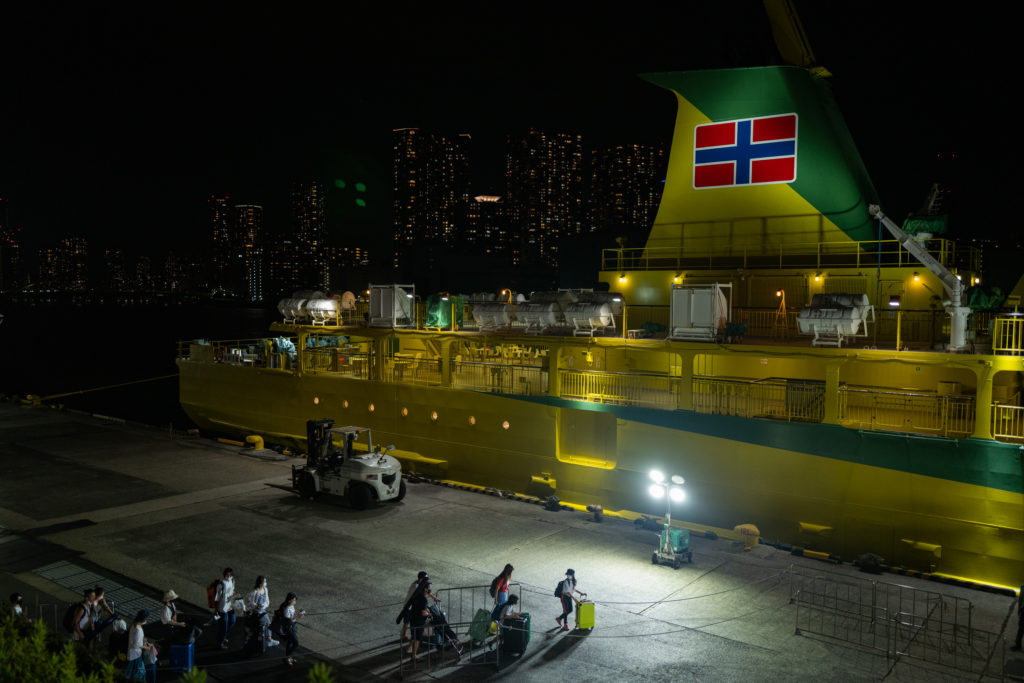
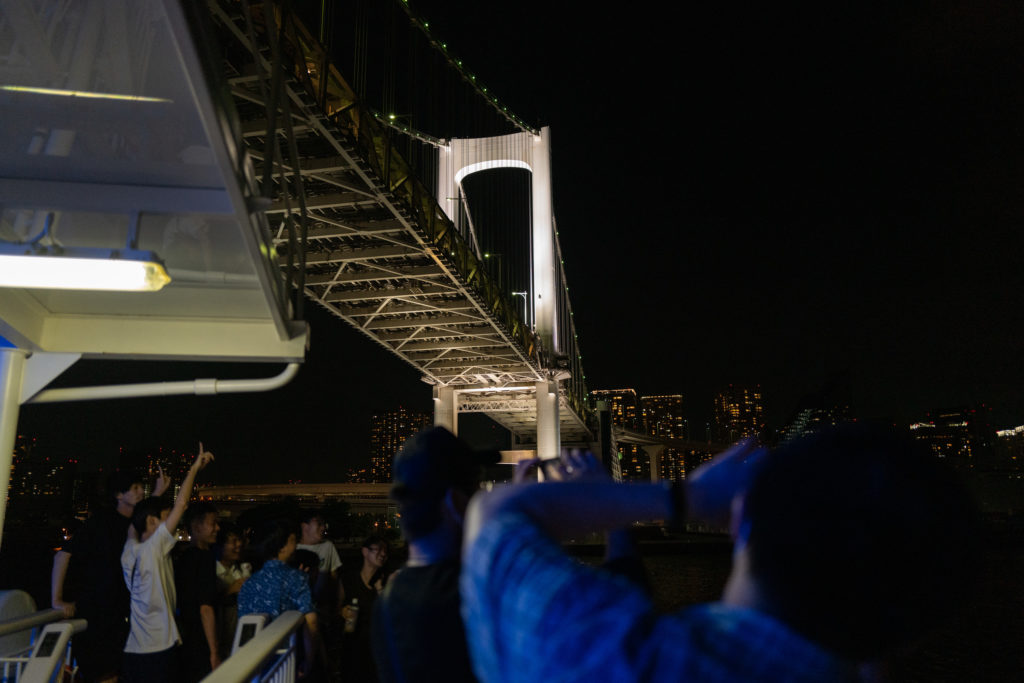
Some ten hours later, our ship docked at Kōzu’s western port.
One of the first people we met was the owner of a restaurant and inn called Nora. We had to bike from the port across the island — bike up and over the lowest pass in the shadow of Mount Tenjo — to get to her place. Though the place was busy, we were the only non-locals. Throughout the building families sat and children ran around screeching, filling the air with the shrill of life. Lucas and I dined on lavish lunch sets of fried fish and raw fish and fishy soups. The owner — who refused to give me her name — ran it all and ran it with an iron fist. She had no employees.

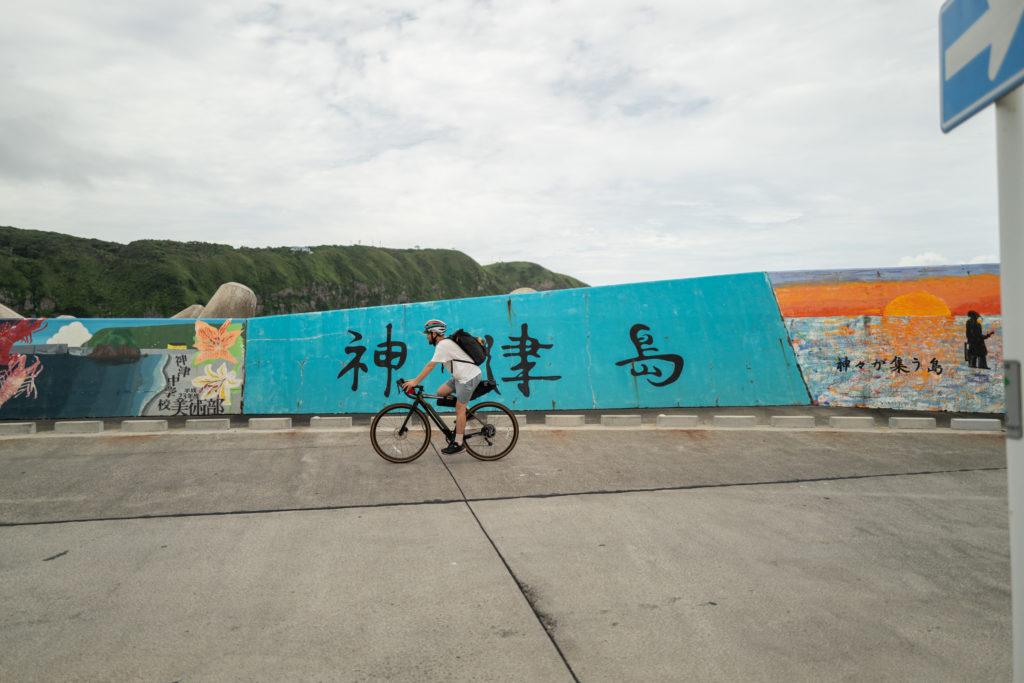
From Nora we biked down to the island’s eastern port. Two ports are needed to compensate for swells. Each morning the island announces over shortwave radio which port will be in use for the day. This eastern port was raw and uninhabited, with looming cliffs, far more dramatic than the western port and its gentle hillside leading to town and the mountains. Rumor had it there was delicious waki-mizu — spring water — to be had. It burst from the mountainside just behind the pier. When we found it, a husband and wife were filling up a dozen two-liter bottles with the water. The husband worked at a local government office and his wife was in charge of business loans. They cooked only with this water, they said, came once a week and filled up as they were doing now, hauling home their twenty-four kilograms of mountain wetness.
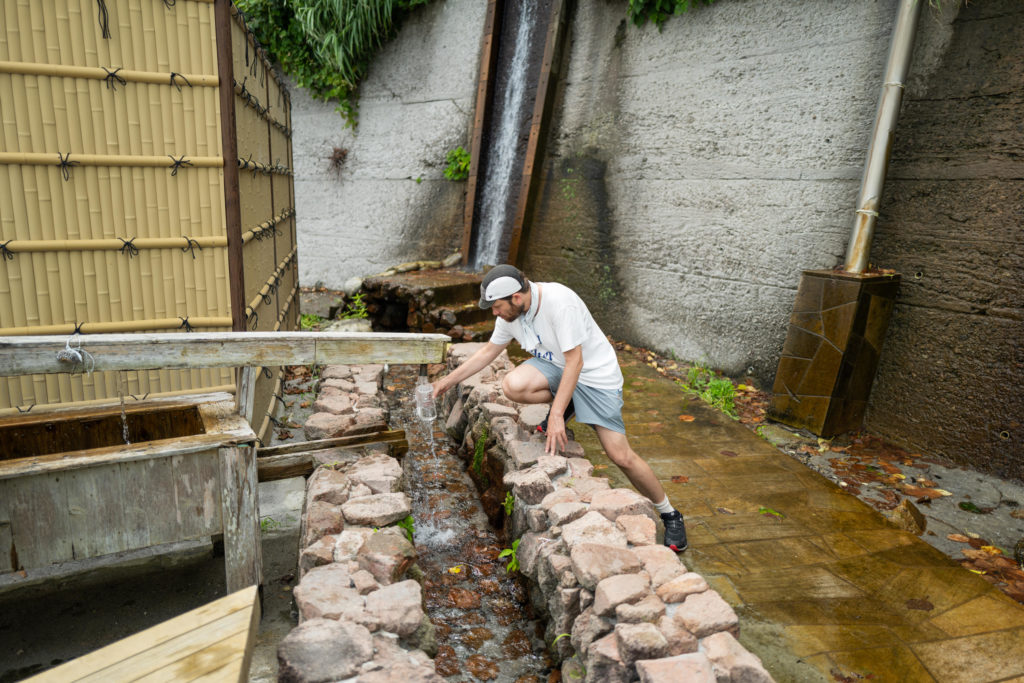
The water was ice cold but delicate and sweet, with a soft Evian-like mouthfeel. It flowed generously from metal pipes into a wooden trough. It was genuinely delicious, and seemed like an accurate distillation of the landscape around us: pure, sunkissed, with a pinch of minerals. Our own bottles now full, Lucas and I biked the back roads, the tiny roads, over to the west side of the island, along the coast, to the Akasaki Promenade, perhaps the most famous — or at least most photogenic — tourist point on the island.
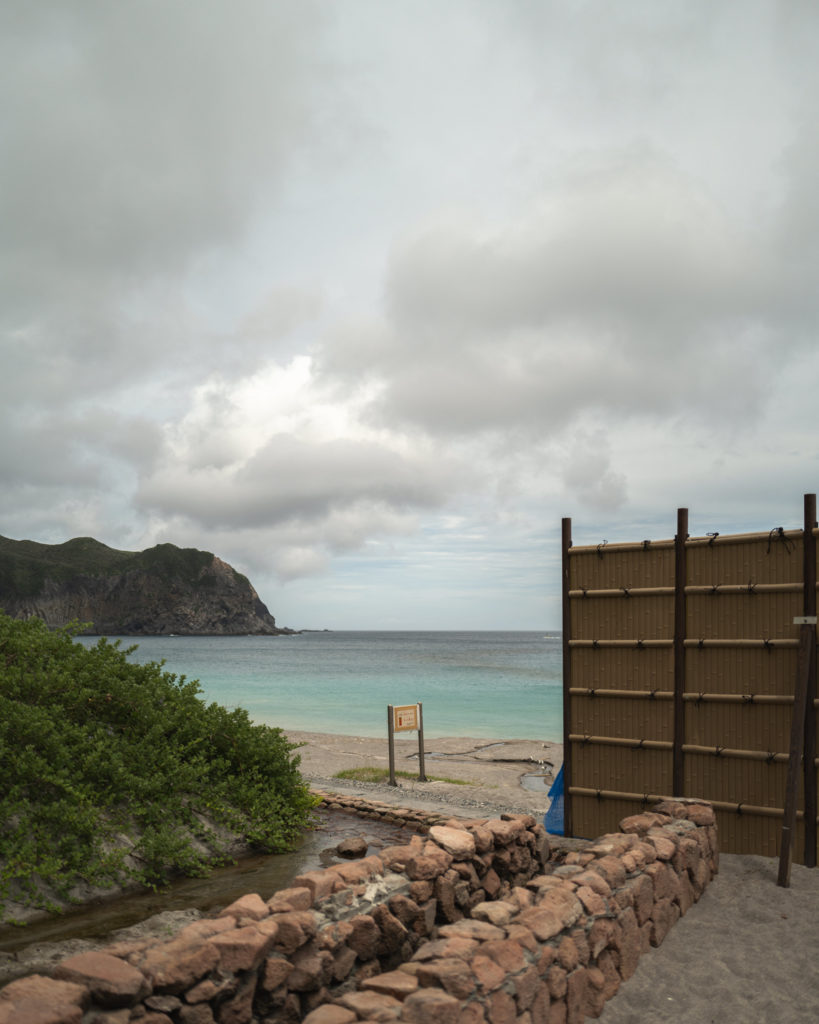
The Promenade is a cove shielded from the greater ocean, excellent for snorkeling and swimming. Around the cove, a series of wooden docks and platforms have been built. Two middle-aged men who looked like adult-baby twins — chubby and fully geared up with rash guards and goggles and matching striped shorts, special water shoes, the whole nine-yards — took turns canon-balling off the highest platform. In the water swam a number of families, children of all ages.
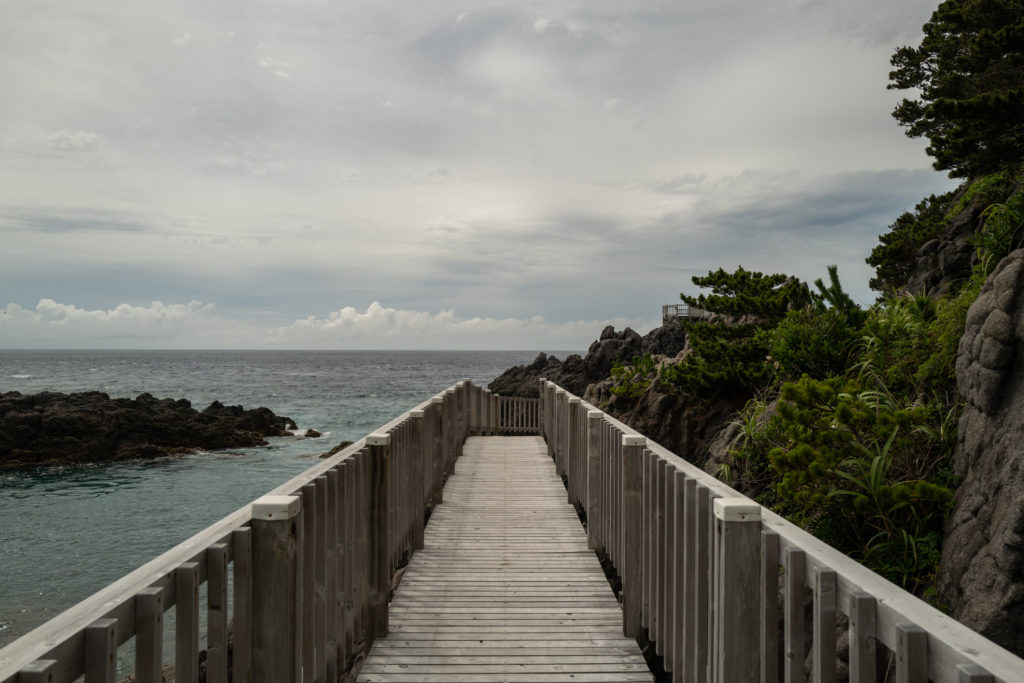
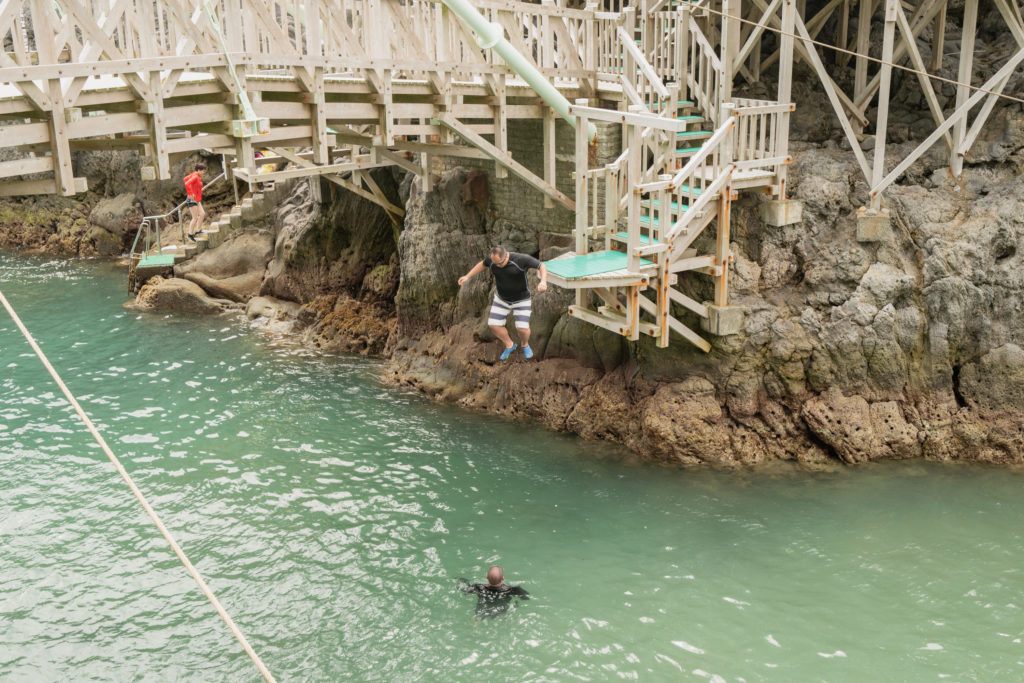
Lucas and I lacked snorkeling gear. Regardless, we swam — Lucas in his shorts and me in my underwear. I cut my foot on a sharp rock. Lucas floated and observed from the corner of the cove. It felt good to be in the salty water. This wasn’t my first time on the island. I had visited twenty years earlier, madly in love, and back then I swam this same cove. As I floated now — double my age — on my back looking up at the wooden platforms and grey sky above, I tried to remember who I was then, what I was afraid of and who I wanted to be. Funnily enough, Lucas had just founded Papersky, and as much as I wanted to write for a publication like his (and submitted ideas and was rejected!), I had no guidance or mentor to show me the way. I suppose that’s what hurt the most back then — that rudderlessness. An overwhelming sense of solitude and aloneness in this great big world of ours. I had come from a small town, without much understanding of how the machinery of life operated beyond its borders. This is one of many reasons that folks from small towns have a hard time leaving — they step out and realize just how little they know, how little they’re been prepared for the bigger stages of life. So, yes, I was terrified, floating twenty years ago in this same cove. Terrified but excited. I felt the potential of what could be and was determined to figure out a way to get there. And now, today, here I was with Lucas, on assignment for the magazine, the two of us floating like goofballs as the giant bambinos dove off the platforms and kids splashed all around.
Sated, Lucas and I hopped back on our bikes making a bee-line for the island’s hot springs. The warm waters healed, and two big baths overlooked the ocean. They were mixed gender and required swimsuits. It was here we began to notice the same folks around us — folks we saw on the boat earlier in the morning and folks we saw at Akasaki. The island was small, the number of visitors smaller, and the places to visit smaller yet.
Back at our inn, two young fishermen had just checked in — a couple guys in their twenties who had dropped out of the corporate life to fully commit to fishing. They lived for fishing and were planning to fish the entire night away. From nine p.m. to nine a.m. I listened to their plans in awe. The thought of fishing in darkness for twelve hours seemed fantastical.
High above the tsunami line lies Kōzu’s main shotengai strip. This is where Umeya, the closed cake shop was located. But along the strip also sits a surprising number of independent convenience stores. Tiny, rickety, wooden shops selling everyday things. They all rustled — their large single-pane sheets of glass became percussive in a stiff breeze — but the owner of one particular store loved ice cream. Loved it so much that his selection was unparalleled. Lucas and I had never seen so many kinds of ice cream before. The earlier cake travesty had been subverted. The assortment before our eyes obliterated anything offered up by Family Mart. The owner’s son helped us choose. He was five and knew only of Kōzu. He bounced around like a rabbit.
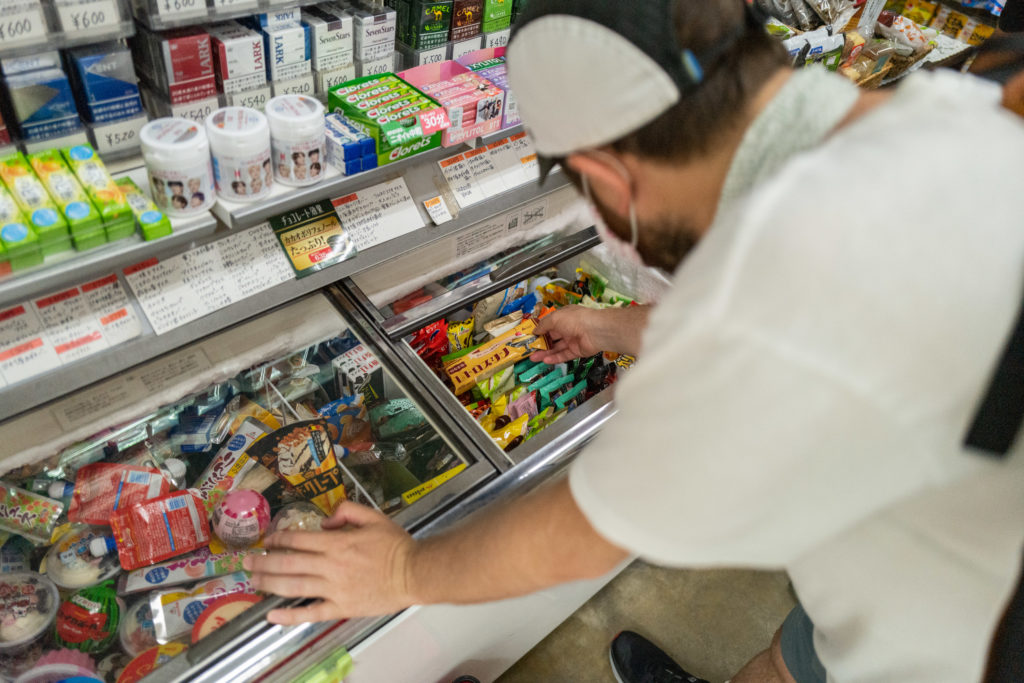
It was there — sitting outside the shop, cooing and eating ice cream — we met Risako and Daiki. They were young and in love. It was plainly obvious in the way they cavorted down the road, almost skipping — hand in hand — and the way they spoke to one another — with deep concern and affection and care. They stood outside and smoked cigarettes and told us their story: Daiki worked in construction and Risako was in fashion. They had matching funky shoes. They were on the island for two nights, were staying in a small bed and breakfast just down the road, were on the hunt for snacks like us. They had come from Tokyo, sort of picked the island at random. It was easy enough to get to — a single boat ride. Why not.
Overnight it rained ferociously and relentlessly. The sky was starless. Which was a shame because the island is known for its dark night sky, as an exceptional stargazing spot. In fact, it has several such designated points. Points where you can set up a tripod and partaking in astrophotography.
In the morning the young fishermen were smiling at breakfast. Hadn’t caught much but had a blast regardless. Sat out on the dock all night in the rain telling stories. It was hard to believe they were in their twenties. It felt like they should be in their 70s, arthritic, retired. They, too, smoked. Smoked like they were from a different era. In fact, everyone on the island seemed to smoke.
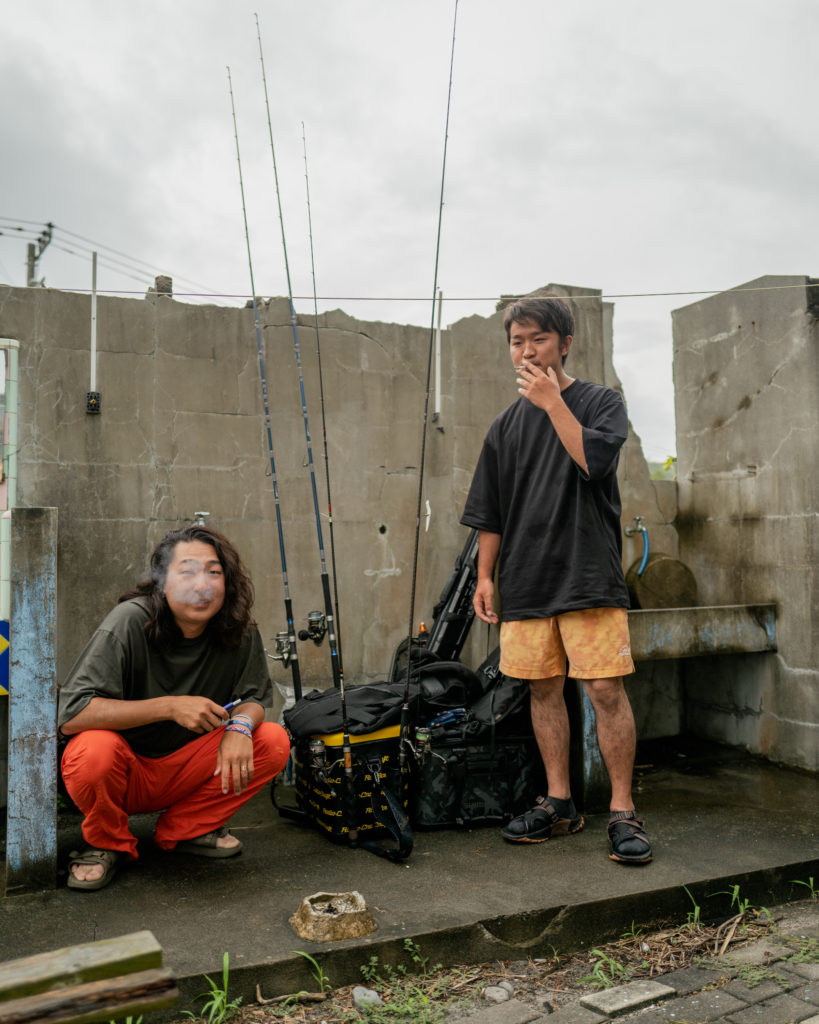
Lucas and I spent the morning wandering Monoiminamikoto Shrine on the edge of town. It was atavistic, with big trees and felt like it was home to gods overlooking the wellbeing of the small fishing industry down below. The grounds were covered in white sands from nearby Maehama Beach. It was empty except us and a groundsman who carried sprigs of sakaki from building to building.
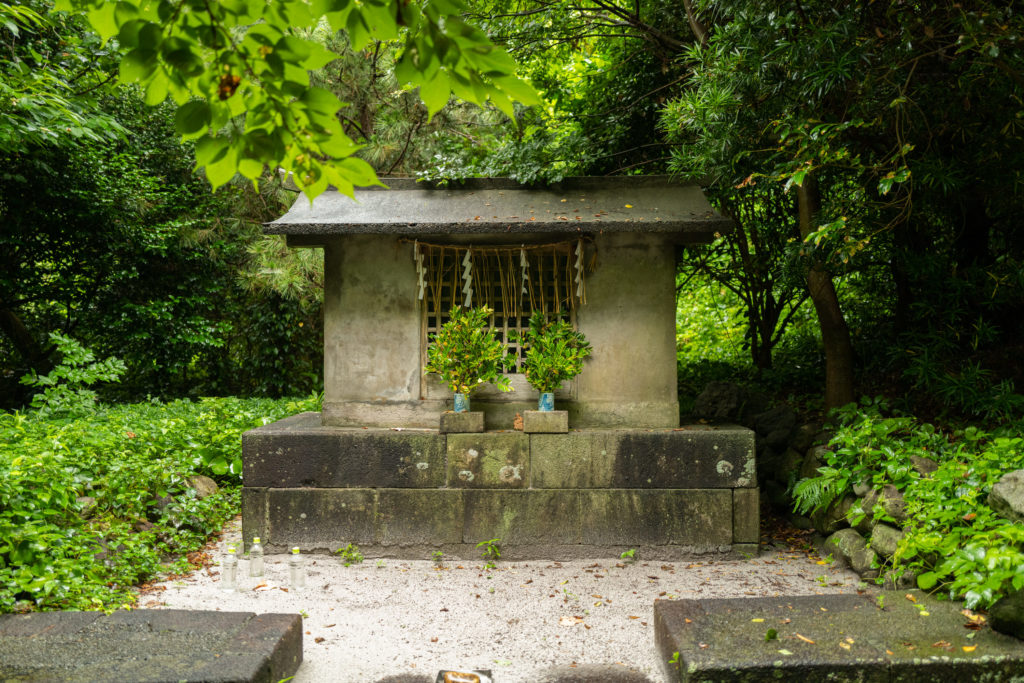
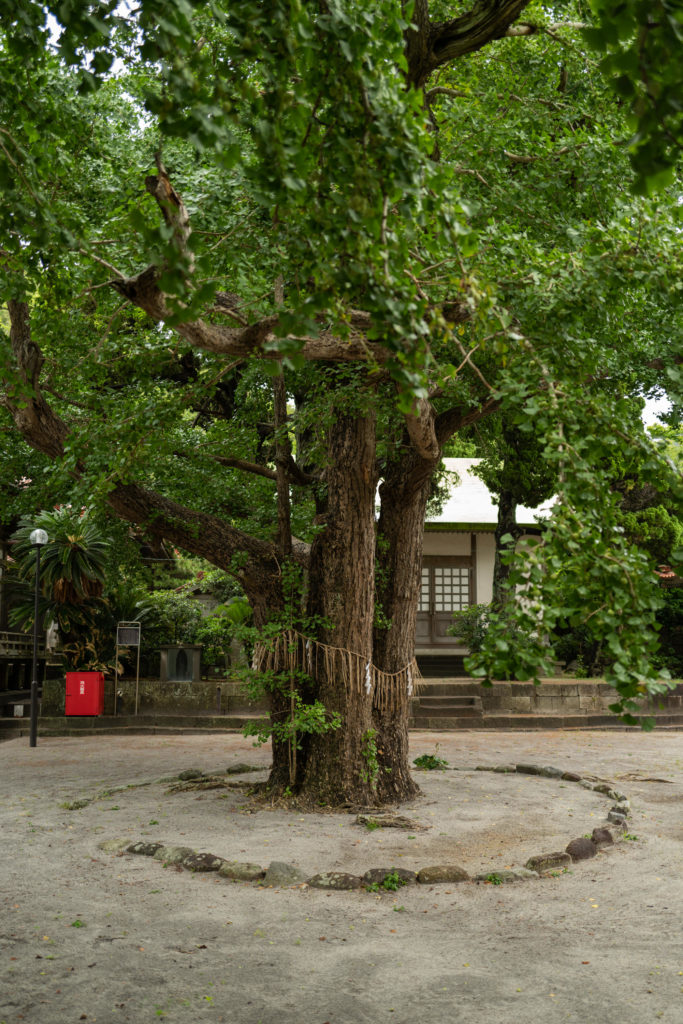
Walking back to our inn, we once again saw Risako and Daiki. They were holding hands, walking in the rain, carrying plastic bags of more snacks.
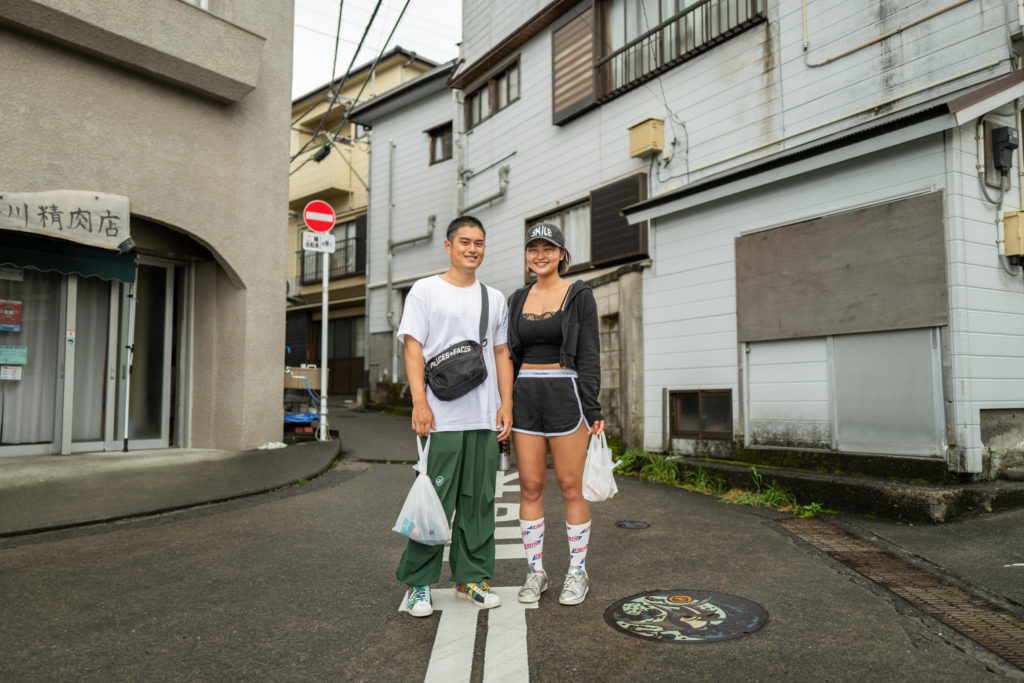
By luck, Umeya the cake shop was now open. Lucas chose six cakes with surgical precision. Why six? We carried them back to our inn. The fishermen were still up. The owners of our inn — Ayano and Kentaro — were sitting in the lobby. “Cake time!” Lucas announced. We all gathered around the dining table and Lucas opened the box, gingerly lifting out a mont blanc. He presented it to Ayano, a woman of exception grace who had been nothing but kind and understanding and accommodating. “Last night, I heard you say that mont blanc was your favorite,” Lucas said, handing over the beautiful pastry. She almost burst into tears.
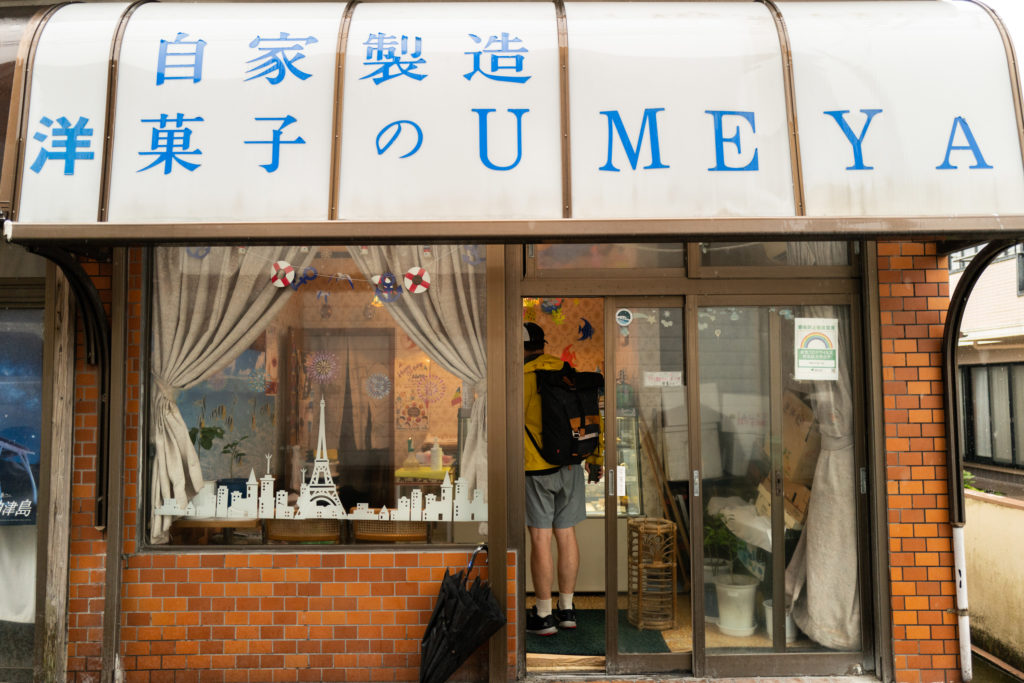
So it was that we ended our island trip eating cake with two fishermen and the owners of our inn. Delicious cake, I might add, from the last cake shop on the island. Twenty years ago, it’s likely I had walked past it. Heck, I may have even bought a mont blanc. Twenty years from now, it will most certainly be gone.
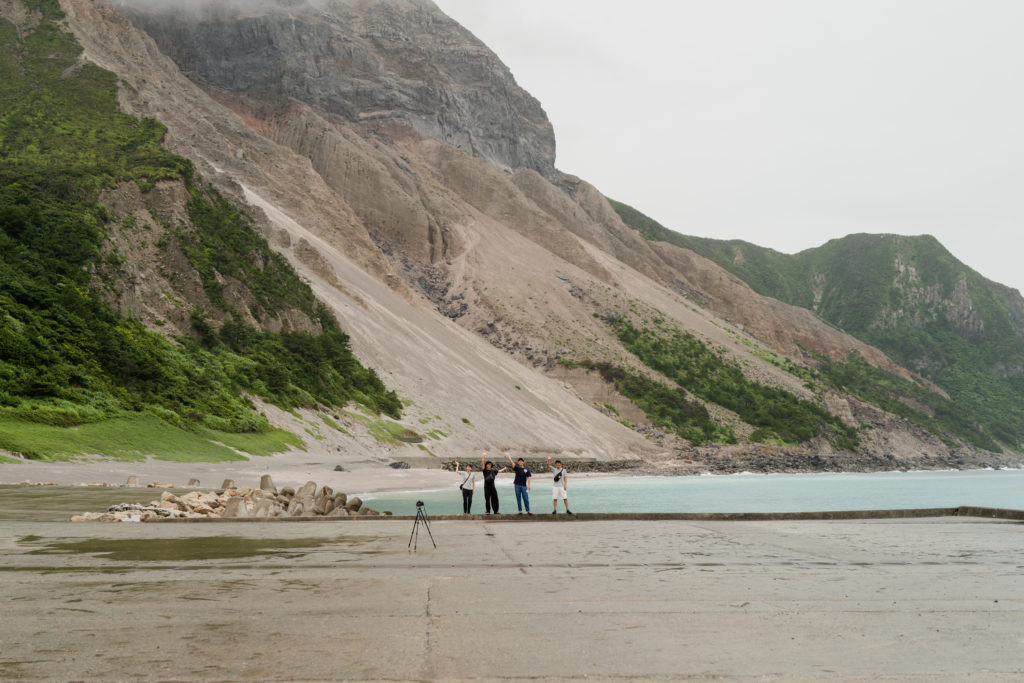
Kōzu is a funny little island you can easily get to from Tokyo. You could come on a whim, as Lucas and I did. We marveled at how easy it all was. Adventures like this are right there, right to be had if you know about them; one night on a boat and one night in an inn. A cast of characters. Thirty-six hours exploring. If you bring a bike — especially an electric bike — you can see almost everything. And maybe if you’re lucky you’ll get some blue skies, some starry nights. You’ll certainly eat fresh fish prepared any way you like, marvel at one man’s wild selection of ice cream, and if the timing is right, feast on a little bit of cake.
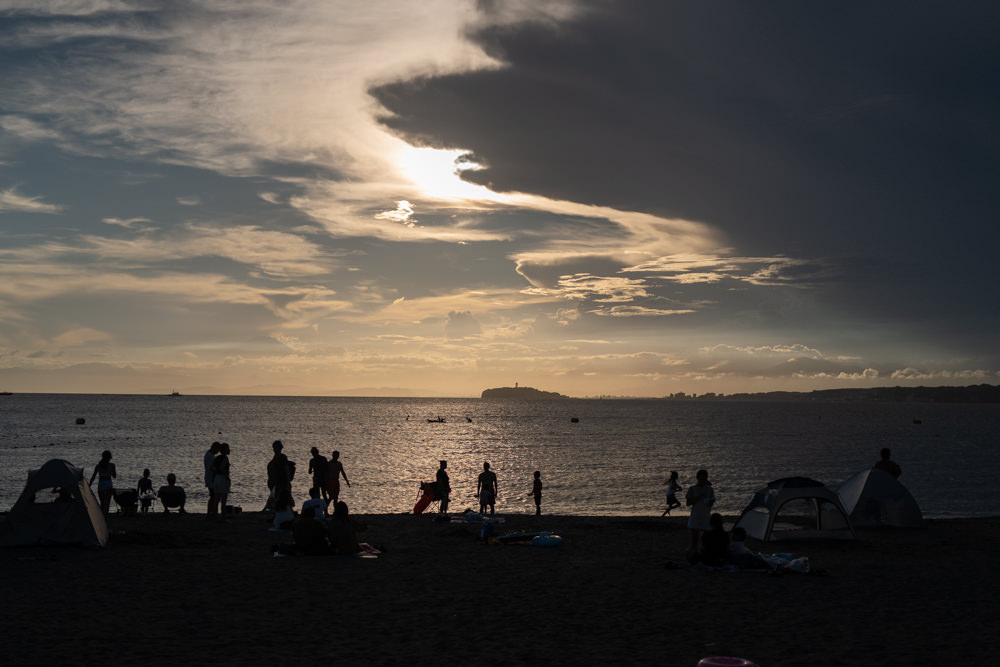
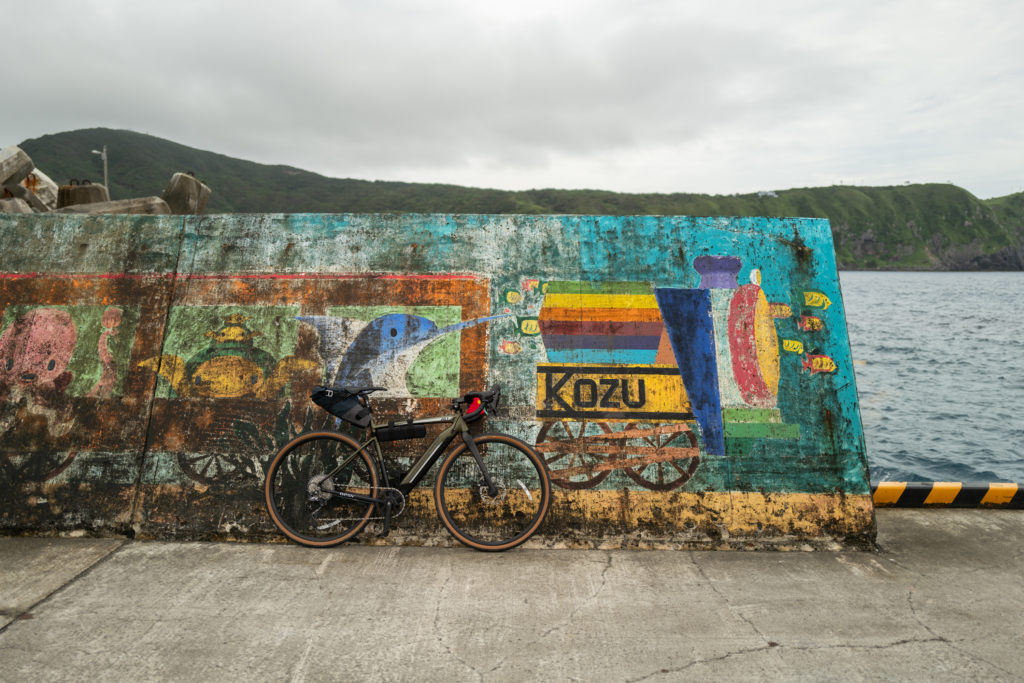
A note about the bike:
BESV lent us a couple of JG1s — their so-called “e-Gravel Road bikes” — for our island adventure and they were a blast. Light (15.9kg) and agile — we swooped through traffic from Papersky’s Shibuya office to the port, walked the bikes on the boat, and then rode them off the dock on the other side. The JG1 is much stiffer than my trusty old PSA1, so the ride was significantly more aggressive. This made climbing easier and descending more thrilling, but a bit less fun for sight seeing on the flats. If you’re looking for a performance-focused bike, with smooth electric assist, the JG1 makes sense. For more casual city and sight-seeing riding, the PSA1 is a bit more comfy.












